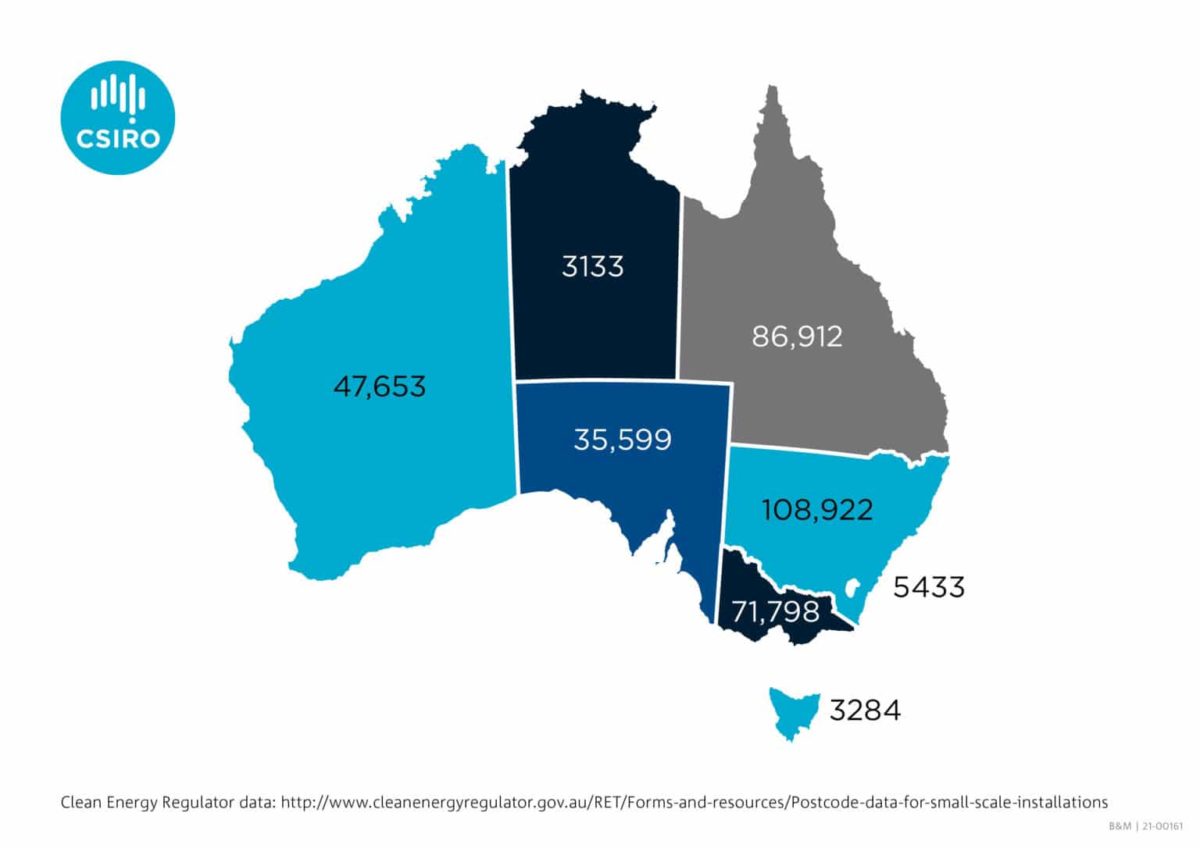Electricity generated from large-scale solar has exceeded the average amount generated by gas for the first time in Australia. Simultaneously, rooftop solar has brought traditional periods of peak grid demand during high summer to their lowest levels in five years, shifting national consumption patterns and causing wholesale electricity prices to hit nine-year lows.
The arresting statistics come from the Australian Energy Regulator’s Wholesale Markets Quarterly report for the first three months of this year. The agency’s chair, Claire Savage, described the report as underlining the effect of Australia’s energy transition.
Unlike much of the developed world, Australia’s peak energy draws come from cooling rather than heating, with millions of Australians turning on air conditioners in the middle of hot summer days. With around 20% of Australian households now fitted with PV panels – up from 0.2% in 2007 – the National Electricity Market (NEM) is simply not experiencing the draw it would from this traditional behavior, with one in five Australians bypassing the grid altogether, powering their air conditioners with energy harvested on their rooftops.
The highest peak electricity demand this financial year occurred on Jan. 24, 2021 – the hottest summer day for much of the country’s east. The pressure placed on the grid that day was lower than each of the previous five summers.
Hugh Saddler, an energy consultant and honorary associate professor at Australian National University, said in the National Energy Emissions Audit for the Australia Institute that this phenomenon was “undoubtedly caused by the growing supply from rooftop solar.” Rooftop solar is now generating more energy for the grid than coal plants.
“Rooftop solar made a larger contribution to the grid during the 2020-21 peak demand than either Liddell (output of 750 MW) or Yallourn (output of 1.3 GW),” Saddler said in the report, in reference to two of Australia’s biggest coal-fired power stations.
Prices plunge
The rise of solar in Australia has driven wholesale electricity prices down to depths not seen in almost a decade.
“There were fewer prices above AUD 300 ($233)/MWh this quarter than in any other Q1 since 2012, and there were also near record numbers of negative prices in Victoria and South Australia,” the Australian Energy Regulator said. “As a result, black coal generation fell to its lowest ever Q1 level, and gas generation fell to its lowest Q1 level since 2005.”
The Australian Energy Regulator’s report noted that both Victoria and New South Wales consumed less than 1 petajoule of gas last quarter. In other words, gas-fired electricity hit its lowest level in 16 years, and was overtaken by solar.
This week, the government of Australian Prime Minister Scott Morrison pledged AUD 600 million of unallocated funding from the recent budget to build the controversial 660 MW Kurri Kurri gas plant in New South Wales. The announcement followed the publication of the International Energy Agency's (IEA) Net Zero by 2050: a Roadmap for the Global Energy Sector report. The IEA says in no uncertain terms that to reach net zero by the middle of the century, there must be “from today, no investment in new fossil fuel supply projects, and no further final investment decisions for new unabated coal plants.”
This content is protected by copyright and may not be reused. If you want to cooperate with us and would like to reuse some of our content, please contact: editors@pv-magazine.com.




By submitting this form you agree to pv magazine using your data for the purposes of publishing your comment.
Your personal data will only be disclosed or otherwise transmitted to third parties for the purposes of spam filtering or if this is necessary for technical maintenance of the website. Any other transfer to third parties will not take place unless this is justified on the basis of applicable data protection regulations or if pv magazine is legally obliged to do so.
You may revoke this consent at any time with effect for the future, in which case your personal data will be deleted immediately. Otherwise, your data will be deleted if pv magazine has processed your request or the purpose of data storage is fulfilled.
Further information on data privacy can be found in our Data Protection Policy.